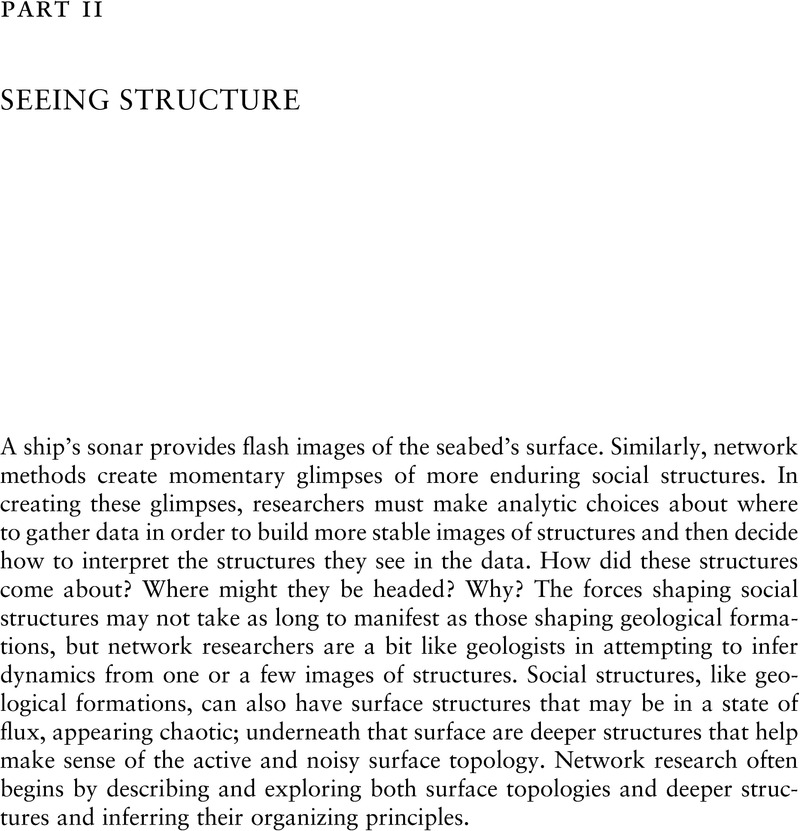Part II - Seeing Structure
Published online by Cambridge University Press: 21 September 2023
Summary

- Type
- Chapter
- Information
- Network AnalysisIntegrating Social Network Theory, Method, and Application with R, pp. 115 - 298Publisher: Cambridge University PressPrint publication year: 2023
References
Suggested Further Reading
Suggested Further Reading
Suggested Further Reading
Anthropological Perspectives on Cohesion

